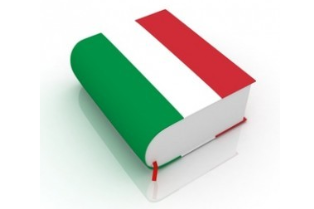
WTI Magazine #34 2014 June, 11
Author : Manuela Bianchi for learnitalygroup.com Translation by:
Our dear Italian language. Who among us has never faced a word of Italian language? Surely spaghetti, opera, amore, pizza are among the most popular words ... and yet the lexicographic material of our beautiful language contains a huge treasure that expresses and gives voice to the culture and the life of our country.
A big time has passed from the first written records dating from the thirteenth century and, over the years, this treasure has been enriched, developed and modified through the continuous and imperceptible transformation process that relates to any language system. But let's see what happened. How did we arrive from Latin to this new way of communication of ours?
First of all, let's say that to determine exactly the birth of the Italian language is an impossible pretension, because it is a centuries-long process of transformation linked to historical events and to changing social realities, and because a language is to be seen in the variety of its aspects and of its functions.
But without going into detail, we know that Italian was before a spoken language and, then, just after, a written one: it was first derogatory considered language of the common people (hence the definition vulgar) and then used as a means of artistic expression. The process of transformation of Latin in the new vernacular lasted over a thousand years, and the unity of the language was hampered by the fact that Italy remained long divided into different kingdoms, duchies, then municipalities, each of which had its own dialect and did not want to give it up.
We also know that the language that we call "Italian" is derived from ancient Florentine (secured by authors such as Dante, Petrarch and Boccaccio), declared as national language after long and heated debates. However, the lack of a political and cultural center capable of promote and disseminate a single linguistic variety, did not allow the vulgar Florentine to immediately become the national language, and confined it for a long time to the role of literary written language. But before we talk about "Italian" we must focus on another factor.
How do you form a language? Every language is socially coded, and this is a fact. We, the speakers of the Italian language, constantly shape the world around us. In addition, geography plays its role and this is why, within the Italian language, there is a unique set of local variations that gave birth to our dialects. Beyond the transformation of Latin to a vernacular language, it is important to remember that Italy was the cradle of different cultures and peoples (each with its own language), including the Etruscans, Umbrians, Samnites, Aequi, Volscians, Sabines, etc.. and that, over the centuries, these ancient Italic languages overlapped those of the conquering peoples, including Latin, Greek, Arabic, Spanish and Gallic and Germanic idioms, etc.. A brief historical-linguistic overview like this can be useful, therefore, to clarify the reasons of the fascinating diversity found today among the dialects of the south, the center and the north of the peninsula.
What is the Italian standard, then? For Italian standard it is meant a level language fixed in regulatory terms, which, as such, does not correspond to the actual use of neither any Italian region, nor to the use of the people. And this happens on all levels of language, from pronunciation to lexical choices or preferences. The standard remains the main point of reference in the teaching of Italian as a mother tongue in L2 courses of Italian for foreigners, in the media, publishing and so on.
So what is the current situation? Simply, Italians (more or less) knowand dominate an official language, while daily speaking and facing with the extraordinary dialectal mosaic of the regional variants of our beautiful country. This is precisely the reason why we thought of this column. Symbolically, we invite you to pack up and come with us to discover the curiosity, the facets, the most common grammatical errors in a trip that from north to south will let you discover the Italian spoken "at home".
If you want to know more about how to learn Italian, go to www.learnitalygroup.com



